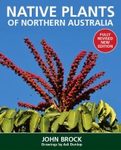By: Rudy R Schippers(Author), Christian Houba(Translated by)
482 pages, 311 colour photos
![Légumes Africaines Indigènes: Présentation des Espèces Cultivées [African Indigenous Vegetables: An Overview of the Cultivated Species] Légumes Africaines Indigènes: Présentation des Espèces Cultivées [African Indigenous Vegetables: An Overview of the Cultivated Species]]()
Click to have a closer look
About this book
Customer reviews
Related titles
About this book
Language: French
Until the beginning of the 20th century, people in Africa depended to a significant extent on food which had its origins in Africa. A diverse range of originally wild African species was domesticated a long time ago and included rootcrops, cereals, legumes and many different vegetables.
Popular food crops from outside the region were introduced into Africa and these exotic crops soon started to dominate the traditional crops. This trend was enforced with the arrival of European settlers and has resulted in most African vegetables becoming minor crops.
However, most exotic crops are not successful in either dry or very humid regions and do not do well in the warmer parts of Africa; in these regions, indigenous African crops are still important and indigenous vegetables are much in demand because many people no longer have enough money to buy the more expensive exotic crops. Consequently, there is now a reversal in the trend away from exotics and towards traditional vegetables. This has generated a call for information, especially from students who wish to focus on such crops, and from extension staff who are under pressure from farmers to advise them.
Légumes Africaines Indigènes: Présentation des Espèces Cultivées describes over 100 African vegetable species and covers the 25 most common crops in detail. Where possible, information is provided on the origin of the species and on some botanical aspects. The main emphasis is on their agronomy, providing as much detail as is currently known about these crops. It is to be hoped that this book will contribute towards knowledge of African vegetables and their further advancement.
Summary in French:
Jusqu’à l’aube du XXe siècle, les plantes originaires du continent constituaient la base de l’alimentation des populations africaines. Une grande diversité d’espèces sauvages indigènes avaient été domestiquées de longue date, notamment des plantes à tubercules, des céréales et de nombreux légumes.
Des cultures vivrières largement consommées dans d’autres régions du globe ont été introduites en Afrique et ces espèces exotiques ont bientôt commencé à se substituer aux cultures traditionnelles. Cette tendance s’est renforcée avec l’arrivée des colons européens et, peu à peu, la plupart des légumes africains sont devenus des cultures mineures.
Toutefois, les espèces exotiques se développent généralement mal dans des régions trop sèches ou trop humides ainsi que dans les parties les plus chaudes de l’Afrique. Dans ces régions, les espèces autochtones conservent leur importance et la demande en légumes indigènes se maintient car bon nombre d’Africains ne disposent plus de revenus suffisants pour acheter les espèces exotiques, jugées trop chères. On assiste donc à un renversement de tendance et à un regain d’intérêt pour les légumes traditionnels au détriment des cultures non-africaines.
Cette évolution a généré une demande d’information, notamment de la part d’étudiants désireux de consacrer leurs efforts aux espèces indigènes et de vulgarisateurs sollicités par les agriculteurs.
Dans Légumes Africains Indigènes: Présentation des Espèces Cultivées, sont décrites près de 200 espèces, les 25 espèces les plus fréquemment cultivées étant traitées en détail. Ont été incluses toutes les informations disponibles sur l’origine et sur les aspects botaniques des espèces décrites. L’accent est mis sur le volet agronomique, l’ouvrage présentant l’état des connaissances actuelles sur les pratiques agricoles relatives aux cultures concernées.
Nous espérons que ce livre contribuera à la connaissance des légumes africains et stimulera leur étude.
Customer Reviews
By: Rudy R Schippers(Author), Christian Houba(Translated by)
482 pages, 311 colour photos






![Légumes Africaines Indigènes: Présentation des Espèces Cultivées [African Indigenous Vegetables: An Overview of the Cultivated Species] Légumes Africaines Indigènes: Présentation des Espèces Cultivées [African Indigenous Vegetables: An Overview of the Cultivated Species]](http://mediacdn.nhbs.com/jackets/jackets_resizer_xlarge/15/151193.jpg?height=620)
![Légumes Africaines Indigènes: Présentation des Espèces Cultivées [African Indigenous Vegetables: An Overview of the Cultivated Species]](http://mediacdn.nhbs.com/jackets/jackets_resizer/15/151193.jpg)




















![Die Haplopoda und Gladocera (ohne Bosminidae) Mitteleuropas [The Haplopoda and Gladocera (without Bosminidae) of Central Europe]](http://mediacdn.nhbs.com/jackets/jackets_resizer_medium/10/109572.jpg?height=150&width=99)






